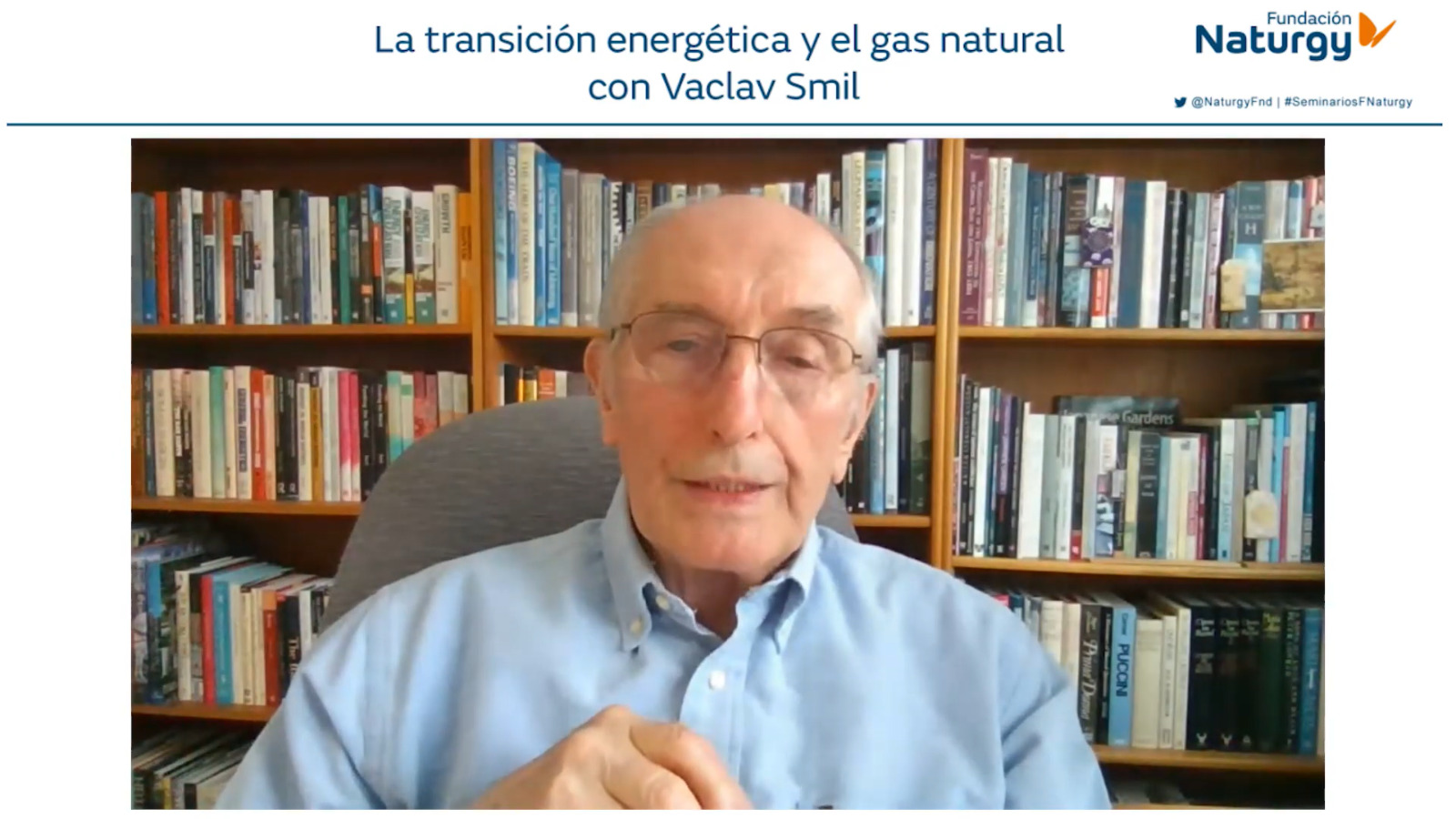Vaclav Smil: “There is no rational scenario that relegates natural gas to an insignificant role before 2050”
The scientist, ranked as one of the 100 leading world thinkers by Foreign Policy, argues that “to date, there is no clear nor technically sound path toward decarbonisation”.
“The International Energy Agency forecasts that world gas consumption in 2040 will exceed the level of 2019 by almost 28%”, notes the University of Manitoba lecturer, who today presented ‘Natural gas in the new energy world’, published by the Naturgy Foundation.

“Any description of natural gas as a major asset to be abandoned, or thinking about ‘pushing gas out completely’ and underrating it as a very short bridge between coal and renewable energies, could be a big mistake”. These are the forceful words of scientist Vaclav Smil, considered one of the world’s 100 leading thinkers by Foreign Policy, in the document ‘Natural gas in the new energy world’, published by the Naturgy Foundation.
Smil, who will feature in a Naturgy Foundation webinar this afternoon, ensures that “there is no rational scenario that relegates natural gas to an insignificant role or makes it a relic of the past before 2050”.
Critical of those who refer to the Paris Agreement as an “important step” in decarbonisation, the expert states that “to date, there is no clear nor technically sound path” to achieve this goal.
“All recent scenarios for 2050 are just narratives or more or less plausible approaches, driven more by policy than by technical capacities assessed realistically, and only if the EU continues the course of aggressive decarbonisation for at least a decade will we be able to understand what will truly be possible for 2050”, says the scientist.
Smil notes that even the European Council recognised in December 2020 that member states have the right to decide their energy mix to achieve the 2030 climate goal, choosing the most appropriate technologies, including gas. “Even deliberately promoted and administratively accelerated decarbonisation will not be possible without the use of natural gas”, he states.
And again referring to data, he notes that real quotas presented in ‘Going Climate-Neutral by 2050’ forecast that natural gas will supply approximately 20% of gross domestic energy consumption in the EU in 2030, and approximately 18% in the baseline scenario in 2050. “Clearly, in any realistic scenario of gradual decarbonisation, natural gas will continue to be one of the pillars of world and European energy supply during the next generation and the only uncertainty is what its long-term future will be like”.
At the global level, the expert notes that in its latest ‘Stated Policies Scenario’, the International Energy Agency predicts that world gas consumption in 2040 will exceed the level of 2019 by almost 28%.
Investing for lower prices
Regarding the future natural gas price scenario, Smil defends that “an adequate investment in developing existing reserves and the expansion of the global market should lead us to lower prices; otherwise, the lack of such investments, combined with the premature closure of other capacities fuelled by fossil (or nuclear) fuels, could lead to even higher price spikes in the future”.
According to the expert, the rise in natural gas prices in Europe in 2021 “was not caused by any imminent physical shortage of fuel, but by an unpredictable chain of events”: a colder winter (therefore, a longer heating season), reduced wind electricity production and growing dependence on imports at a time when global demand recovered following the worst phase of economic restrictions caused by COVID.
Three reasons for maintaining natural gas
The scientist considers that there are three main reasons for maintaining natural gas “as a main component in the primary energy supply or perhaps increasing its consumption, both in wealthy countries and those in the process of modernisation”: to step up replacing power generation with coal and complement renewable generation; because we have no other such affordable and reliable short-term option for producing heat; and the difficult replacement as a source of energy in many industrial processes and raw materials in the manufacture of essential materials and compounds.
“2019 set another record annual growth rate of 2.3% and also a record increase in LNG capacities”, says Smil, who states that despite the pandemic interrupting the continued expansion of the world natural gas industry, a new record in demand is likely to be set in 2022 or 2023.
He says that the LNG market will be the clearest indicator for the future. “The global LNG network has become essential for balancing markets and providing flexibility and supply security”, says Smil. “This market will see more structural changes because many of the longer-term delivery contracts will expire during the first half of the third decade of this century, and because new liquefaction capacities will continue to enter into operation”, he adds.
Share